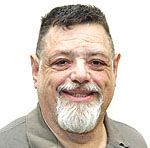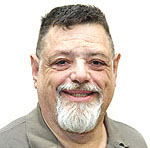‘I’ ON CULTURE
The new film A Wrinkle in Time is a beautiful mess. In other words, great visuals and muddled story. And that is a shame. It is based on a classic book by Madeleine L’Engle of the same name. However, director Ava DuVernay and writer Jennifer Lee have sucked much of the meaning out of it.
The plot is complex. Young Meg Murry (Storm Reid) is a fairly typical junior high girl, incredibly self-conscious and suffering because of the loss of her physicist father Alex (Chris Pine) in an experiment gone wrong years before. After dealing with her physicist mother Kate (Gugu Mgatha-Raw), she feels the need to get away. Joined by her little “annoying genius” brother Charles Wallace (Deric McCabe) and Calvin (Levi Miller), a fellow student who wants to be her boyfriend, she goes to an abandoned house where she meets three “celestial beings,” the larger-than-life Mrs. Which (Oprah Winfrey); Mrs. Whatsit (Reese Witherspoon), who is like a constant babbling hippie; and Mrs. Who (Mindy Kaling), who only speaks in quotes from historical figures.
Meg finds out her father is still alive and with the help of the three beings, she can “tesser,” or move from one world to another. She, Charles Wallace and Calvin bounce around, meeting some really unique beings until she finds her still-alive father and works to gets him home.
L’Engle, who I met and had lunch with years ago when she was resident scholar at the Episcopal Church of St. John the Divine in New York, wrote the book as a Christian fable dealing with the battle between good and evil and the need for love (particularly Christ’s love) in order for good to win. As a result, some libraries have refused to carry the book. In the case of the movie, the writer and director have completely stripped away any vestiges of Christianity. While Mrs. Who in the book quoted Christ a few times, all of those have been stripped from the film. The love involved here was more Calvin’s innocent love for Meg rather than anything that might be considered religious in any way. As a result, a key point of the book was lost.
DuVernay was so interested in political correctness that she made Meg biracial and Charles Wallace an Asian adoptee. Added to that, the theory that went wrong in the book came from the father; in the movie, from the mother. Although not seeming vital, it shifted a lot of the angst in Meg’s life. In the book, her mother was a biologist who simply suffered the loss of her husband. In the movie, she had a huge sense of guilt. In the book, Meg felt out of place in a family of geniuses; here the other kid (and there were a pair of twins in the book left out in the film) was adopted, thereby removing part of the outsider feeling.
Another problem was the casting. Putting the big stars in parts that were not really part of the action unbalanced the whole story. The three “celestial beings” were originally mechanisms to move the plot along. But when you have the major names in the movie in those parts, attention is focused away from the central characters.
The acting is fine. Winfrey as an omniscient force is easy to accept, and Witherspoon and Kaling could have, but didn’t, mail in their parts. They were good, but again, the focus on them took away from the central plot. The three kids were fine, essentially just playing kids on an adventure. Pine was strong as Alex, and I’ve always had a fondness for Mgatha-Raw.
There are some wonderful set shots and great computer-generated effects, although there were a couple that were a bit cheesy, as if they suddenly found they needed to save money. Doing that cost a few interesting ideas that worked well in the book.
Perhaps I’m overly critical since I really liked the book. The film is stunning visually, and it certainly tries to get the message through. But in the end, it really just does not work. If you’re a big Winfrey fan, go. If not, wait until it’s on television.






